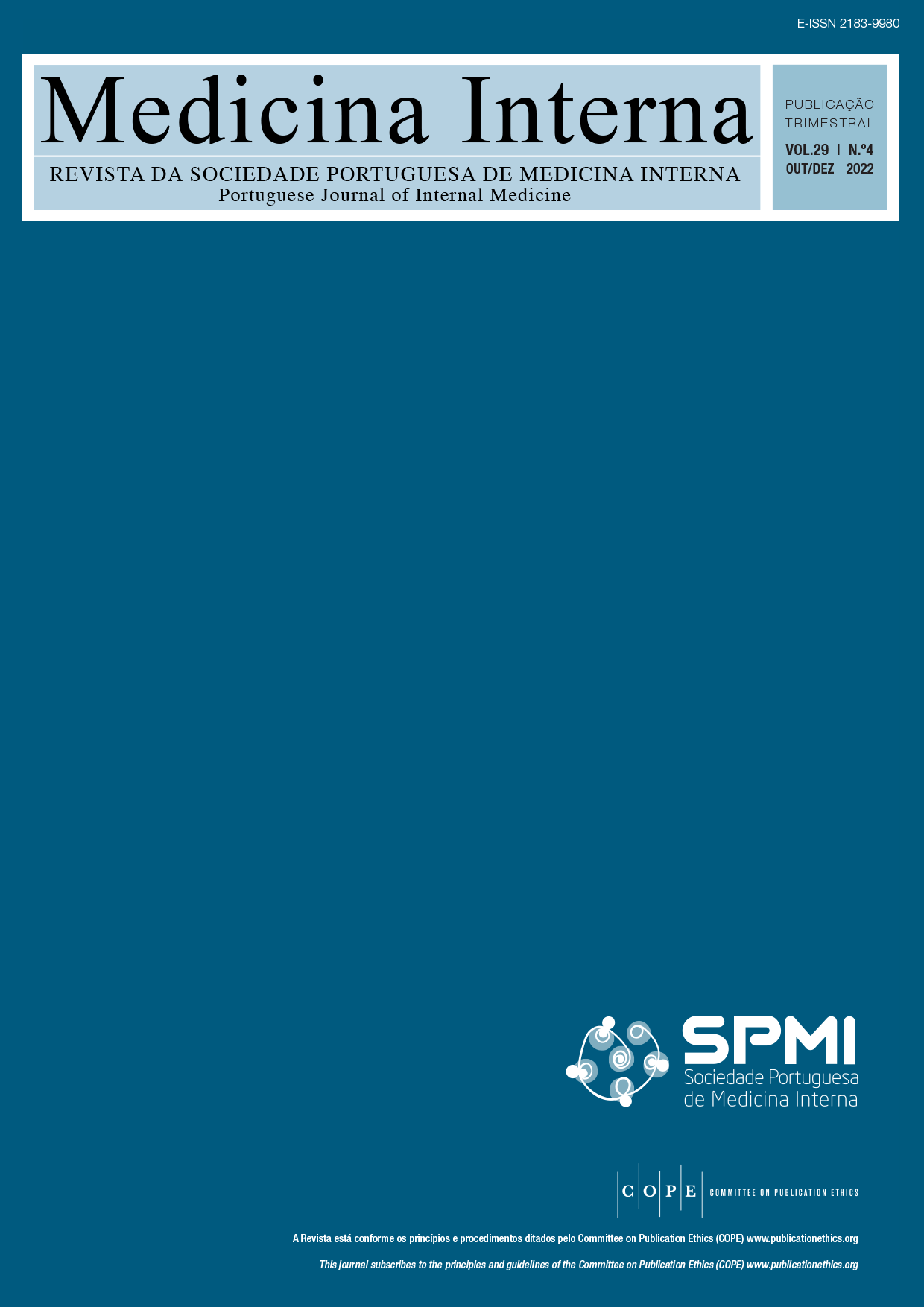High-Flow Nasal Cannula Oxygen Therapy in A Palliative Care Context at Home, a New Opportunity? A Palliative Care Team Experience
DOI:
https://doi.org/10.24950/rspmi.647Keywords:
Dyspnea, Oxygen Inhalation Therapy, Palliative CareAbstract
Dyspnoea is one of the more common symptoms in advance stages of several diseases and its control is crucial for patient comfort. Supplementary oxygen therapy plays an important role on that. In the last years, the use of high-flow nasal cannula oxygen therapy (HFNC) in palliative care has been developed. We present three cases of patients accompanied by the Palliative Care Team who used HFNC for dyspnoea control and the team’s effort for organizing domiciliary use of it. All patients showed a better quality of life, in what concerns dyspnoea, and the use of opioid therapy was reduced. The presence of the Palliative Care Team was essential for the patient, family and domiciliary care team’s support. HFNC seems to be a possible secure and effective resource in the management of respiratory symptoms in the palliative patient, along with pharmacological and non-pharmacological strategies.
Downloads
References
Epstein AS, Hartridge-Lambert SK, Ramaker, JS, Voigt LP, Portlock CS. Humidified high-flow nasal oxygen utilization in patients with cancer at Memorial Sloan-Kettering Cancer Center. J Palliat Med. 2011; 14: 835–9. doi 10.1089/jpm.2011.0005
Booth S, Wade R, Johnson M, Kite S, Swannick M, Anderson H. The use of oxygen in the palliation of breathlessness. A report of the expert working group of the scientific committee of the association of palliative medicine. Respir Med. 2004;98:66-77. doi 10.1016/j.rmed.2003.08.008
Storgaard LH, Hockey HU, Laursen BS, Weinreich UM. Long-term effects of oxygen-enriched high-flow nasal cannula treatment in COPD patients with chronic hypoxemic respiratory failure. Int J Chron Obstruct Pulmon Dis. 2018; 13: 1195–205. doi 10.2147/COPD.S159666
Vogelsinger H, Halank M, Braun S, Wilkens H, Geiser T, Ott S, et al. Efficacy and safety of nasal high-flow oxygen in COPD patients. BMC Pulm Med. 2017; 17:143; doi 10.1186/s12890-017-0486-3
Spicuzza L, Schisano M. High-flow nasal cannula oxygen therapy as an emerging option for respiratory failure: the present and the future. Ther Adv Chronic Dis. 2020; 11: 1–15. doi 10.1177/2040622320920106
Dolidon S, Dupuis J, Valencia LC, Salaun M, Thiberville L, Muir JF, et al. Characteristics and outcome of patients set up on high-flow oxygen therapy at home. Ther Adv Chronic Dis. 2019;13: 1–8; doi 10.1177/1753466619879794
Duarte JC, Santos O, Lousada C, Reis-Pina P. High flow oxygen therapy in palliative care: A reality in a near future? Pulmonology. 2021; 27:479-480. doi 10.1016/j.pulmoe.2021.08.003
Bode S, Grove G. Use of Humidified High Flow Nasal Oxygen in Community Palliative Care: A Case Report. Palliat Med Rep. 2020;1:179- 82. doi: 10.1089/pmr.2020.0026.
Díaz-Lobato S, Perales J, Iñigo J, Alises S, Segovia B, Escalier N, et al. Things to Keep in Mind in High Flow Therapy: As Usual the Devil is in the Detail. Int J Crit Care Emerg Med. 2018; 4:48. doi : 10.23937/2474-3674/1510048
Martins M, Campos E, Ferreira M, Reis-Pina P. Autonomy and dyspnea in palliative care: a case report. Pulmonology. 2020; 26:1057. doi 10.1016/j. pulmoe.2019.05.005
Weinreich UM. Domiciliary high-flow treatment in patients with COPD and chronic hypoxic failure: in whom ca we reduce exacerbations and hospitalizations?. PLoS ONE. 2019; 14: e0227221. doi 10.1371/journal. pone.0227221
Goda K, Kenzaka T, Kuriyama K, Hoshijima M, Akita H. End-of-life home care of an interstitial pneumonia patient supported by high-flow nasal cannula therapy: A case report. World J Clin Cases. 2020; 8: 4853-7. doi 10.12998/wjcc.v8.i20.4853
Downloads
Published
How to Cite
License
Copyright (c) 2022 Medicina Interna

This work is licensed under a Creative Commons Attribution 4.0 International License.
Copyright (c) 2023 Medicina Interna






